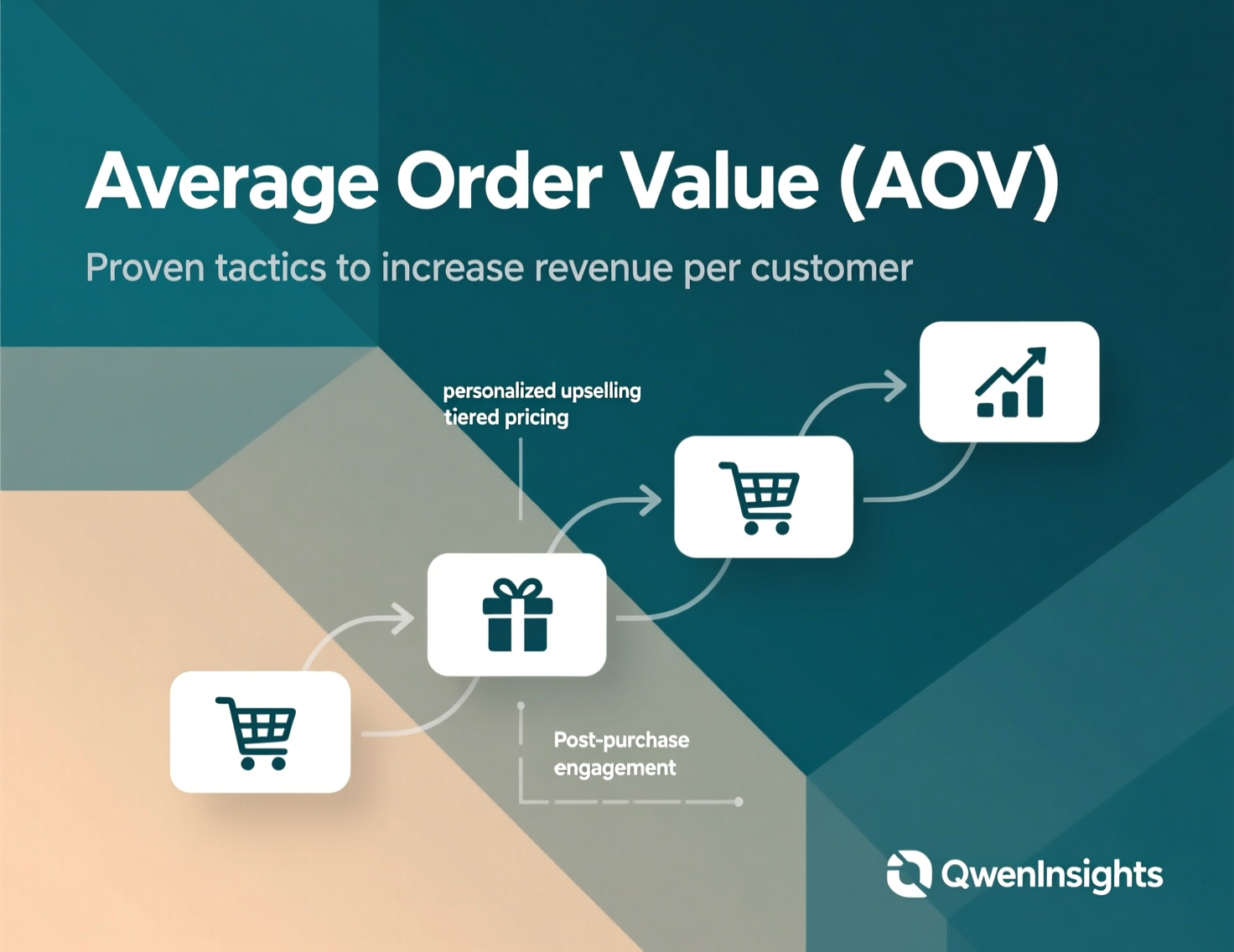
Bundles Upsells Cross-Sells
Improving average order value is the quickest lever most stores can pull to grow revenue without buying more traffic. Instead of chasing new visitors, you systematically encourage buyers to add a little more—through smart bundles, timely upsells, and relevant cross-sells. This AOV playbook distills what works today across storefronts, subscriptions, and marketplaces. You’ll learn how to architect offer structures, where to place them in the journey, how to price and position them, and how to measure the compounding impact on average order value. Along the way, you’ll see real examples and templates you can paste into your site.
Whether you’re on Shopify, WooCommerce, BigCommerce, Magento, or a headless stack, the principles are the same: respect intent, keep friction low, and deliver a clear value exchange. Set a baseline average order value, deploy one tactic per funnel stage, and iterate with data—not guesses. Let’s build your AOV playbook.
Why Average Order Value Matters
Compounding revenue
A 10% lift in average order value often drops straight to gross profit because acquisition cost is unchanged.
Better ad economics
Higher average order value increases allowable CPA, unlocking more scale.
Inventory smoothing
Bundles and cross-sells help move complementary SKUs without discounting the hero product.
Formula
Average Order Value (AOV) = Total Revenue ÷ Number of Orders
Track average order value by channel (paid, organic, email, affiliate) and device (mobile vs. desktop). Segmented AOV exposes where to prioritize offer modules.
The Offer Stack: Bundles vs. Upsells vs. Cross-Sells
Bundles (Value-stacking)
What: Pre-curated sets sold at a slight discount or with added utility.
When: Category pages, PDPs, and cart.
Goal: Lift average order value by increasing quantity/variety with one click.
Upsells (Version-upgrade)
What
Replace the chosen product with a higher-value variant.When
PDP “compare” modules, post-purchase page, and within checkout (if platform allows).Goal
Raise average order value via premiumization.
Cross-Sells (Complements)
What
Add accessories or consumables that improve the main purchase.When
PDP “Complete the look,” cart drawer, order confirmation email.Goal
Expand basket size to drive average order value.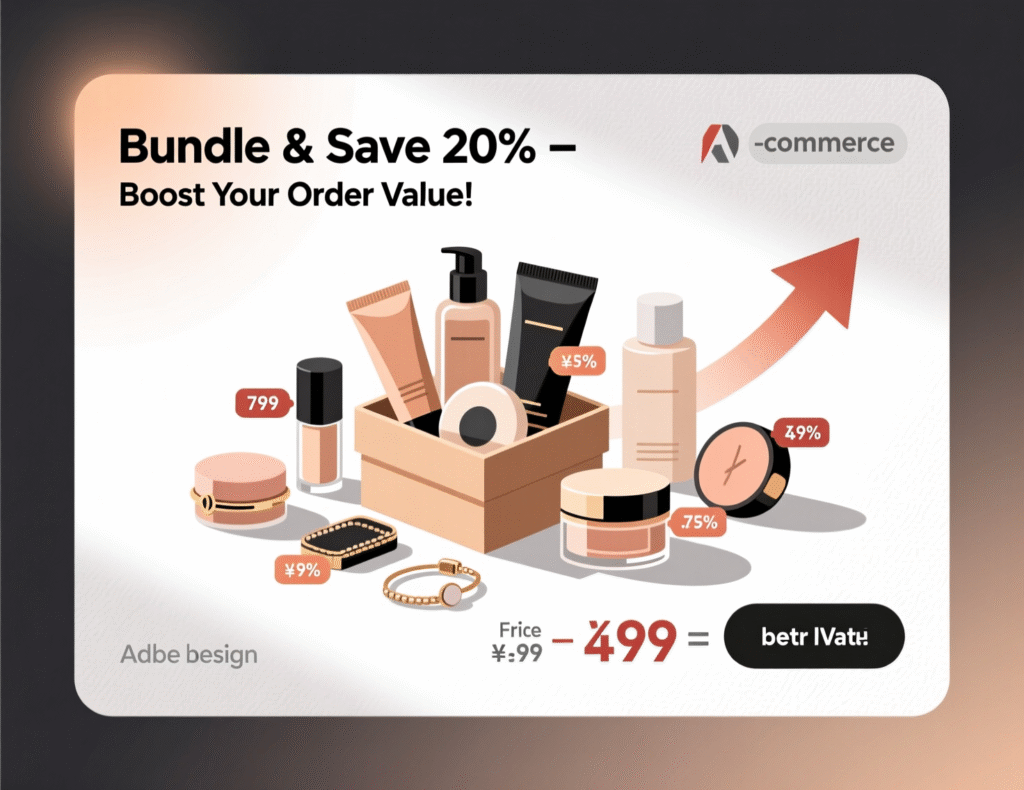
Journey Mapping: Where AOV Gains Hide
Discovery & Category
Add a “Build-Your-Own Bundle” CTA on collection pages.
Use badges like “Best Value” and “Starter Bundle” to anchor average order value expectations early.
PDP (Product Detail Page)
Module stack (top to bottom):
Value props & social proof
Upgrade card (upsell to Pro/Bundle)
Complete the Set (3–5 SKUs, dynamic cross-sell)
Subscription toggle (if applicable)
3) Cart Drawer / Cart Page
Progress bars: “You’re ₹800 away from free shipping.”
One-click add-ons with thumbnails.
Bundle nudge: “Save 12% by adding the Care Kit.”
Checkout / Post-Purchase
Checkout-safe add-ons (if your platform supports it).
One-click post-purchase upsell with timer and clear value (e.g., extended warranty, accessories).
Confirmation page/email: “Add the Refill Pack at 10% off—ships with your order.”
Pricing Psychology That Lifts Average Order Value
Anchoring:
Show a premium option first. The middle plan becomes “reasonable,” raising average order value.Decoy effect
Position a slightly inferior option close in price to make the target offer look irresistible.Tiered bundling
Starter (modest discount)
Popular (best cost-per-unit, highlighted)
Pro (highest average order value, limited-time bonus)
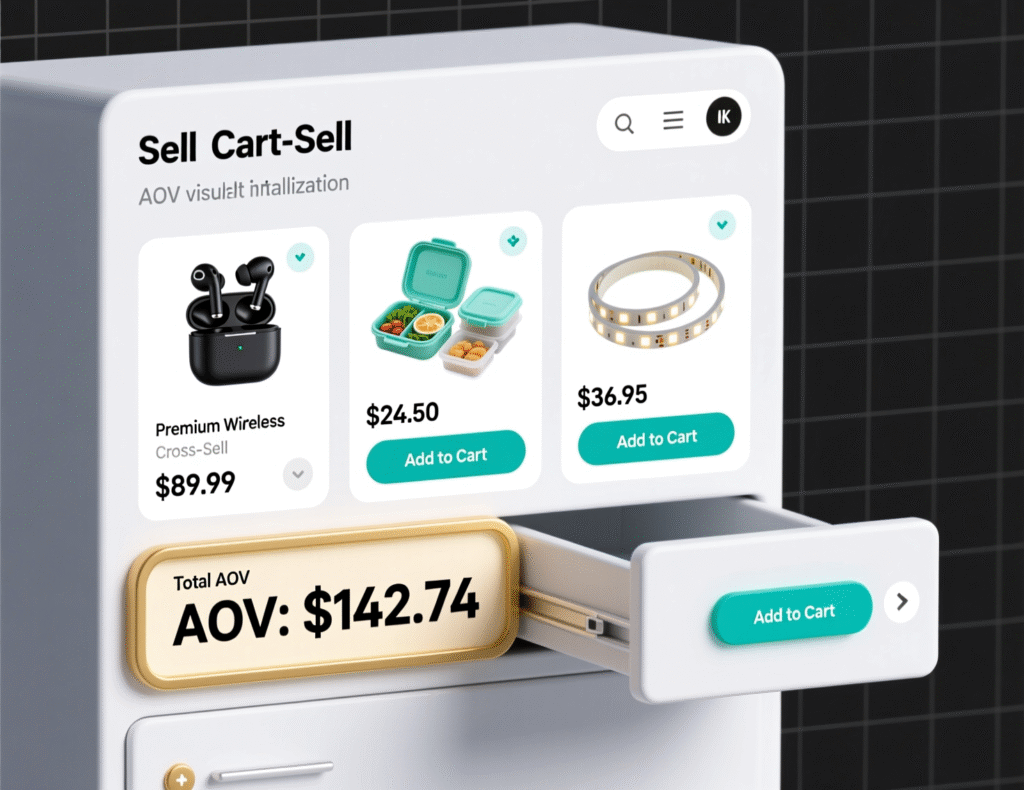
Round vs. charm pricing: Use rounded for bundles (“$100 Kit”) to feel premium; charm for add-ons ($19.90) to feel like low friction.
Threshold perks: Free shipping or a gift with purchase above an amount slightly above your current average order value.
How to Design High-Converting Bundles
Solve a job: “Everything you need for a weekend hike.”
Keep choices tight: 3–5 items. Decision overload hurts average order value.
Visible savings: Show “$134 if bought separately → $119 bundle.”
Variants pre-selected: Default to most common size/color; allow quick edits.
Inventory logic: Prioritize SKUs with healthy stock and margin.
Presentation: Use a bundle card with a hero image, bullet benefits, savings badge, and “Add Bundle” button above the fold.
Case Example (Consumer Electronics)
A D2C audio brand launched a “Podcast Starter Bundle” (mic + arm + pop filter). They placed it as a sticky option on the mic PDP and in cart. Within two weeks, bundle take-rate hit 14%, and average order value rose 18%. (Illustrative example.)
Upsells That Feel Helpful (Not Pushy)
Version upgrades: “Pro” with better battery, warranty, or capacity.
Size upsell: 60-pack vs. 30-pack at better per-unit economics.
Limited-time premium: “Add leather case for 15% off now.”
Contextual: Show upsells that match selected variant and price band.
Post-purchase page: Keep it one click and risk-free (auto-applied discounts, no coupon typing).
Tip
For subscriptions, offer an interval upsell (from every 60 days to 45 days) paired with a small bonus. This quietly increases lifetime average order value.
Cross-Sells That Actually Get Clicked
Complements > substitutes: Don’t distract from the main product.
Micro-bundles: 2–3 accessory items presented as one mini-bundle.
Placement: Right rail on desktop PDP; collapsible accordion under mobile ATC button.
Personalization: If first-time buyer, cross-sell essentials; if returning, show refills/consumables.
Email triggers: If order < your target average order value, send a “Complete Your Setup” email with curated add-ons.
Offer Copywriting Templates (Steal These)
Bundle: “Everything for Day-One Success—Save 12% vs. buying separately.”
Upsell: “Go Pro for 2× battery and lifetime warranty—most customers upgrade.”
Cross-Sell: “Don’t forget the Care Kit—extends product life and keeps finish pristine.”
Threshold: “Only $14.50 away from free express shipping.”
Scarcity: “Weekend upgrade event ends Sunday.”
Use active verbs, outcome-focused benefits, and clarity on savings. Keep snippet length to 120–160 characters for mobile scannability.
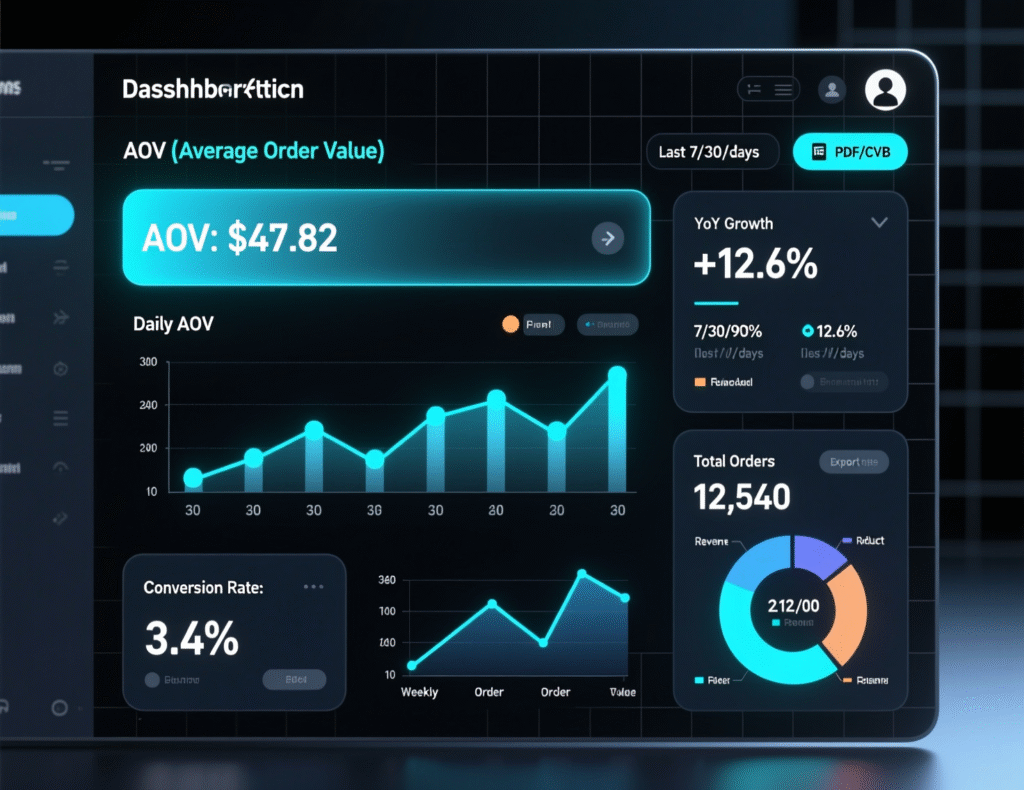
Implementation Patterns by Platform
Shopify
Use a cart drawer app with one-click add-ons; enable post-purchase offers via Checkout Extensibility; use product sets and metafields for dynamic cross-sell rules that sustain average order value.
WooCommerce
Leverage grouped products and “Frequently Bought Together” plugins; place order bumps on checkout.
BigCommerce
Native related products + headless widgets; server-side rules for margin-aware recommendations.
Keep a catalog tag for every SKU: bundle_eligible, upsell_target, cross_sell_pair. This makes merchandising programmatic and stable across seasons, protecting average order value.
Measurement: Make AOV Gains Stick
Track these KPIs weekly
AOV (overall & segmented)
Attach rate for add-ons
Bundle take-rate (bundle orders ÷ total orders)
Upsell acceptance rate (shown vs. accepted)
Cross-sell click-through (impressions → add to cart)
Experimental Design
AB test one location at a time: PDP module vs. cart vs. post-purchase.
Run tests to 95% stat. confidence and at least a full demand cycle (e.g., 2 weeks).
Track secondary effects: returns, support tickets, fulfillment time. A higher average order value that breaks operations is a false win.
Troubleshooting & Ethical Guardrails
If take-rate is low
Reduce cognitive load; simplify choices; make savings obvious.If AOV rises but margin shrinks
Re-price bundles; exclude low-margin items from cross-sell rules.Respect
No dark patterns. Offers should be easy to accept or decline.Accessibility
Buttons ≥44px tall, text contrast AA+, and keyboard navigable offer modals.
AOV Playbook Quickstart (7-Day Plan)
Day 1: Record current average order value and top 20 SKUs by margin.
Day 2: Ship one Starter Bundle on your #1 PDP.
Day 3: Add Complete the Set module (3 items).
Day 4: Add cart progress bar + two add-ons.
Day 5: Enable post-purchase upsell (single, focused).
Day 6: Email “Complete Your Setup” to sub-AOV orders.
Day 7: Review analytics; iterate price/placement.
Real-Life Mini Case Studies
Case 1: Beauty D2C
A skincare brand introduced a Routine Bundle with a 10% built-in discount and a “Derm-Recommended” badge. By moving it above reviews on the hero serum PDP and adding a gentle cart upsell, average order value climbed from $47 to $57 over 30 days while return rate stayed flat.
Case 2: Outdoor Gear
A hiking retailer used cross-sell logic keyed to temperature ranges (“Summer Trail Pack”). Placing it under the mobile ATC button increased add-on attach rate from 6% to 12%, pushing average order value up 15% without promotions.
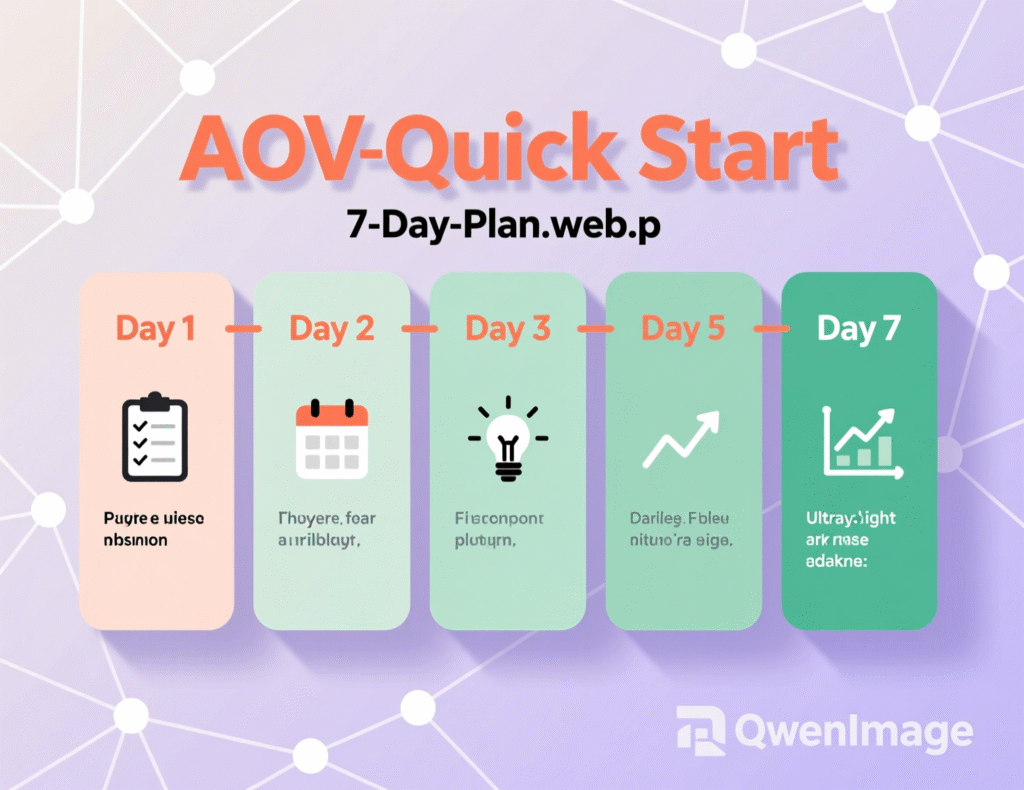
To Sum Up
The biggest unlock isn’t a single tactic it’s systemizing how you present value. Build bundles around jobs-to-be-done, make upsells genuinely better, and keep cross-sells practical. Measure everything, simplify aggressively, and protect margins. When you revisit average order value weekly, you’ll convert existing traffic into durable revenue. Start with one bundle and one post-purchase upsell today—and keep iterating your AOV playbook.
CTA
Ready to implement this in your store? Grab the bundle/upsell templates, wireframes, and KPI dashboard from our AOV Toolkit and apply them this week.
FAQs
Q1) How do I calculate average order value?
A : Divide total revenue by the number of orders for a chosen period. Track average order value at least weekly and segment by channel and device to spot where offers perform best. Use this as your baseline before testing bundles, upsells, and cross-sells.
Schema Expander: Include acceptedAnswer with formula and segmentation tip.
Q2) How can bundles increase AOV without heavy discounts?
A : Bundles create convenience and perceived value. Offer modest savings (5–15%) or add a bonus item. Keep bundles tight (3–5 items) and clearly show “bought separately vs. bundle” pricing to elevate average order value.
Schema Expander: Note psychological effects (anchoring, decoy).
Q3) How do upsells differ from cross-sells?
A : Upsells swap the base product for a premium version; cross-sells add complementary items. Use upsells on PDPs and post-purchase pages; cross-sells in cart and confirmation emails to grow average order value.
Schema Expander: Provide placement examples.
Q4) How much discount should I use in bundles?
A : Aim for 5–15% or better per-unit cost. Protect margins by excluding low-margin items. Test thresholds to keep average order value rising without eroding profit.
Schema Expander: Mention inventory tags.
Q5) How do I avoid annoying customers with upsells?
A : Keep offers contextual, optional, and one-click. Prioritize utility over pressure. Post-purchase upsells should be easy to accept or decline, maintaining trust while lifting average order value.
Schema Expander: Accessibility reminder.
Q6) How do I personalize cross-sells?
A : Use purchase history, cart contents, and basic rules (first-time vs. returning buyers). Show essentials for new customers and refills for repeat buyers to lift average order value.
Schema Expander: Reference dynamic rules logic.
Q7) How does free shipping threshold impact AOV?
A : Set the threshold slightly above your current average order value. Use a progress bar to show how close the customer is. This gently nudges order size upward.
Schema Expander: Add example message.
Q8) How can I measure the impact of these tactics?
A : Track AOV, attach rate, bundle take-rate, upsell acceptance, and cross-sell CTR. Use AB testing and observe a full demand cycle before calling winners.
Schema Expander: Mention sample sizes and significance.
Q9) How quickly should I expect results?
A : You can see directional improvements within 1–2 weeks if you deploy modules on your top PDPs and cart. Sustained gains come from iterating weekly on pricing and placement to optimize average order value.
Schema Expander: Emphasize iteration cadence.
